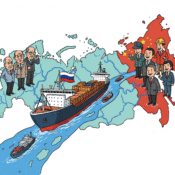China, Japan & South Korea Unite
Amid escalating tensions under Trump's trade war declaration, East Asia's geopolitical landscape is shifting. China, Japan, and South Korea are increasingly focused on economic cooperation, driven by threats from renewed U.S. protectionism. Recent high-level dialogues highlight a commitment to stronger regional trade, with a renewed push for a trilateral free trade agreement. This move aims to mitigate potential disruptions from U.S. tariffs.
The economic interdependence of these nations is significant; China is the top trade partner for both Japan and South Korea, and vice versa. Disruptions would be damaging to all three, incentivizing collaboration. China's substantial trade surplus with the U.S. in 2024 (over $300 billion) underscores the potential impact of U.S. tariffs on its economy.Despite historical complexities, immediate economic pressures are fostering a pragmatic approach. The emphasis on regional stability reflects a shared goal of safeguarding their economies from U.S. trade policy volatility. This evolving alignment signifies a recalibration of regional power dynamics, prioritizing economic resilience and strategic autonomy.



